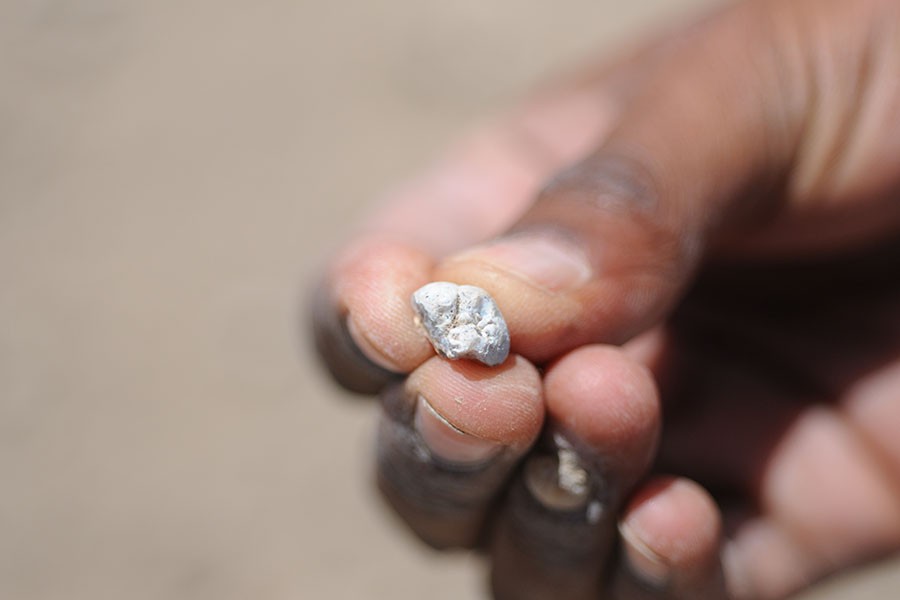Millions of years ago our primate ancestors turned from trees and shrubs in search of food on the ground. In human evolution, that has made all the difference.
The change marked a significant step toward the diverse eating habits that became a key human characteristic, and would have made these early humans more mobile and adaptable to their environment.
New evidence just published by a research team led by a Johns Hopkins University scientist shows that this significant shift took place about 400,000 years earlier than experts previously thought, providing a clearer picture of a time of rapid change in conditions that shaped human evolution.
Naomi E. Levin, the lead author of the report published this week in Proceedings of the National Academy of Sciences, said the diet shift is one of an array of changes that took place around the same time during the Pliocene era—2.6 to 5.3 million years ago—when the fossil record indicates the presence of additional species of human ancestors who were starting to spend more time walking on two feet. Understanding the timing of these events can help show how one change related to another.
"A refined sense for when the dietary changes took place among early humans, in relation to changes in our ability to be bipedal and terrestrial, will help us understand our evolutionary story," said Levin, an assistant professor in the Department of Earth and Planetary Sciences.
The paper reports on an analysis of fossil teeth found in Ethiopia that shows the shift from a diet based on trees and shrubs to one that included grass-based foods took place about 3.8 million years ago – roughly 400,000 years earlier than the date supported by previous research. Grass-based foods could include not only grasses and their roots, but also the tissues of animals that ate grass, such as bird eggs and insects.
That shift would have broadened our ancestors' horizons, Levin said.
"You can then range wider," Levin said of the human precursors that would have included several species including Australopithecus afarensis, extinct some 3 million years ago and represented most famously in the fossil informally known as "Lucy." "You can be in more places, more resilient to habitat change."
"This research reveals surprising insights into the interactions between morphology and behavior among Pliocene primates," said co-author Yohannes Haile-Selassie of the Cleveland Museum of Natural History. "The results not only show an earlier start to grass-based food consumption among hominins and baboons but also indicate that form does not always precede function. In the earliest baboons, dietary shift toward grass occurred before its teeth were specialized for grazing."
Researchers analyzed 152 fossil teeth from an array of animals including pigs, antelopes, giraffes and human ancestors gathered from a roughly 100 square-mile are of what is now the Afar region of Ethiopia. Among the samples were teeth from hominins—including contemporary humans and our extinct ancestors—believed to represent 16 different individuals, said Levin, one of four co-authors of the paper. Along with Haile-Selassie, Levin's collaborators were Stephen R. Frost of the University of Oregon and Beverly Z. Saylor of Case Western Reserve University.
The teeth were examined for their carbon isotope distribution that can act as a marker distinguishing the type of foods that the animals were eating. The data showed that both human ancestors and members of a now-extinct, large species of baboon were eating large amounts of grass-based foods as early as 3.76 million years ago. Previous research dated the earliest evidence for grass-based foods in early human diets to about 3.4 million years ago.
The researchers could not firmly establish a link between external environmental change and the diet of hominins and baboons, but instead attribute the dietary expansion to changes in relations among members of the African primate communities, such as the appearance of new species of primates.
"Timing is critical to understanding the context for this dietary expansion among early humans in relationship to what's happening in global climate, in vegetation communities in Africa, among other mammals, and in terms of the other evolutionary changes that are happening among early humans," Levin said. "If we know the timing of events we can start to relate them to one another."
Posted in Science+Technology








